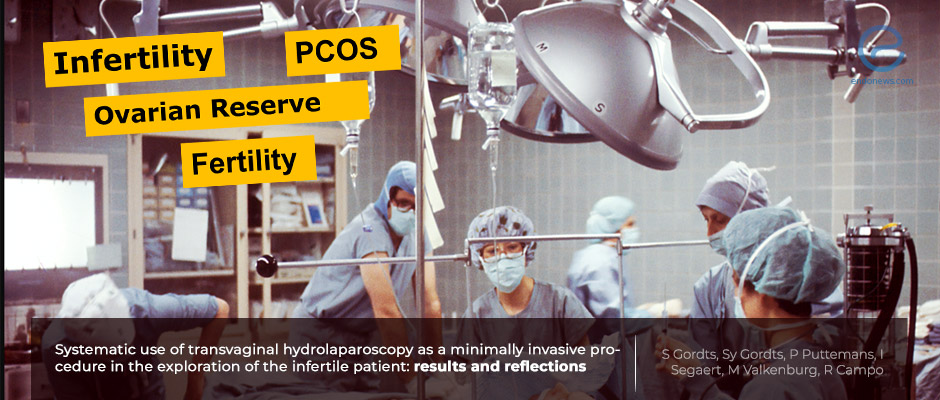The added value of transvaginal hydro-laparoscopy for infertile women
Sep 22, 2021
Among the infertile women, 16 percent were diagnosed with endometriosis.
Key Points
Highlights:
- Transvaginal hydro-laparoscopy is providing a safe and accurate visual exploration of the female pelvis in a one-day hospitalization.
Importance:
- "Transvaginal hydro-laparoscopy" is a minimally invasive procedure with a low complication and a limited failure rate.
What's done here:
- This retrospective cohort research evaluated 13-years data of the transvaginal hydro-laparoscopy technique in a tertiary clinic in Belgium.
- The added value, feasibility and safety of this technique were examined by the results of 2288 infertile women.
Key Results:
- The "transvaginal hydro-laparoscopy" procedure failed in 1% of the patients in accessing the pouch of Douglas.
- Complications of the technique were perforation of the bowel, bleeding, and requiring laparoscopy with a total rate of 0,74%.
- Almost half of the women's pelvis was reported as normal.
- Endometriosis was diagnosed in 366 patients (15,9%) and adhesions were present in 144 patients.
- Ovarian drilling was made in 387 women with clomiphene resistant PCOS.
Lay Summary
The added value of invasive diagnostic laparoscopy has been questioned, postponed by the increased usage of ultrasonography for the evaluation of infertile patients. Gordts et al. from Life Expert Center, Leuven, Belgium have been working on an alternative way called "transvaginal hydro-laparoscopy" to evaluate the pelvic organs and adhesions of infertile women since the late '90s.
The procedure should be performed by expert gynecologists in an outpatient clinic while the patient is in lithotomy position under conscious sedation. Access is gained by a reusable, spring-loaded needle with an adjustable length, and before "transvaginal hydro-laparoscopy" a hysterosalpingography should be the first-line investigation for testing tubal patency. Contra-indications of this method are the presence of recto-vaginal pathology, a fixed retroverted uterus, and an endometriotic cyst larger than 2 cm in diameter.
This retrospective study was the result of the data from 2288 selected infertile women who underwent "transvaginal hydro-laparoscopy" as a part of their work-up in a tertiary center in Belgium.
During transvaginal hydro-laparoscopy inspection, around 16% were diagnosed with endometriosis. Tubal pathology was present in 15% of the patients. Ovarian drilling was performed on 387 women with clomiphene resistant PCOS diagnosis.
The sensitivity of transvaginal hydro-laparoscopy was 70-88% with 100% specificity, when compared to standard laparoscopy. When compared to "transvaginal hydro-laparoscopy", hysterosalpingography has a lower sensitivity (65%) but a higher specificity (83%). The complication rate was 0,74% that includes bowel perforation, bleeding and fail to access the pelvic floor.
Gordts underlined that the transvaginal hydro-laparoscopy is a valuable option to clarify an "unexplained infertility". Details of this retrospective cohort study can be found in the journal "Facts Views Vision in Obstetrics, Gynaecology and Reproductive Health".
Research Source: https://pubmed.ncbi.nlm.nih.gov/34184842/
transvaginal hydrolaparoscopy diagnosis polycystic ovaries clomiphene resistancy ovarian drilling endometriosis.

